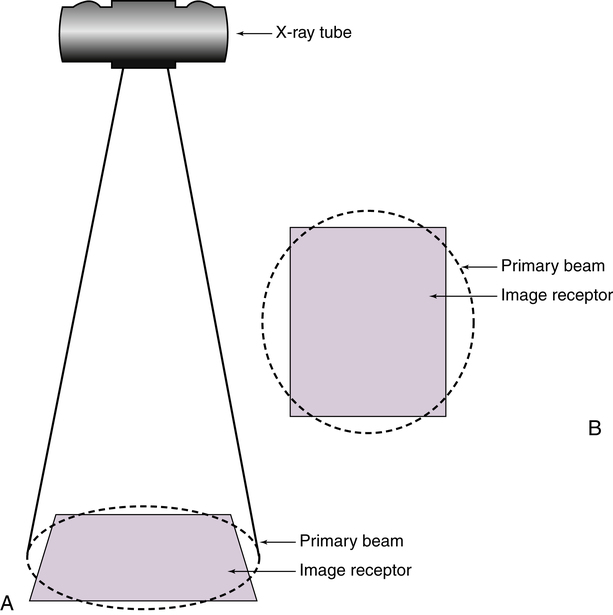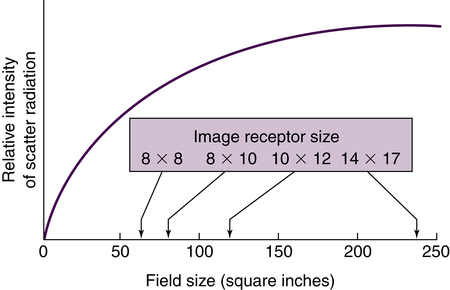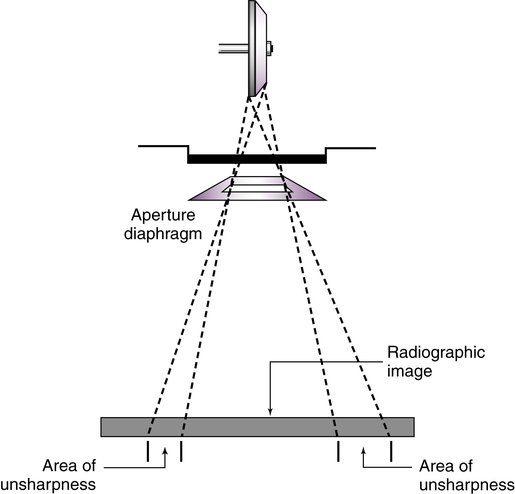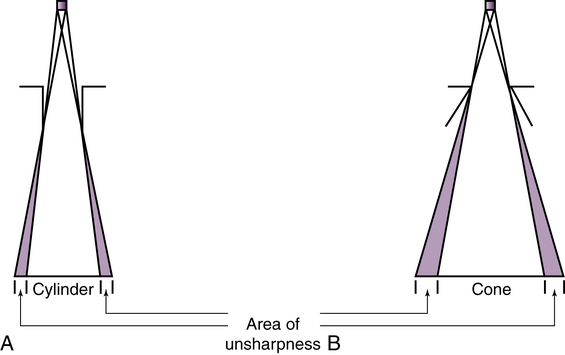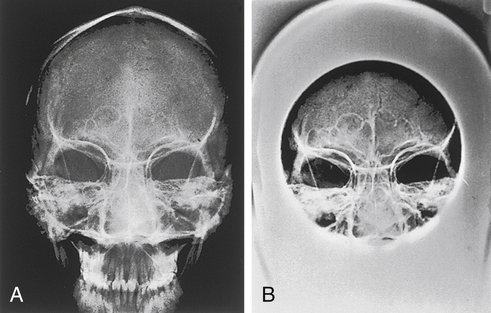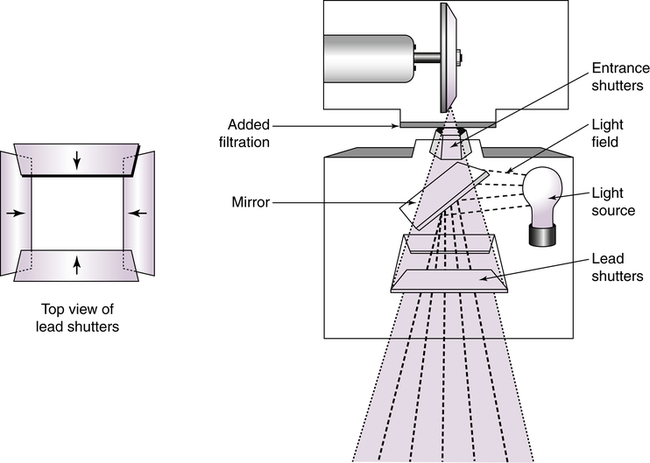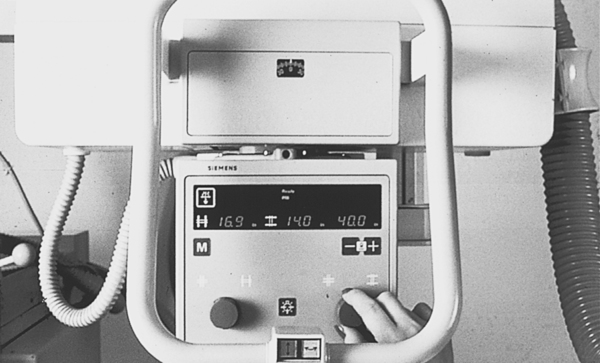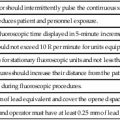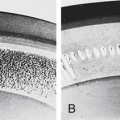Chapter 5
Scatter Control
After completing this chapter, the reader will be able to perform the following:
1. Define all the key terms in this chapter.
2. State all the important relationships in this chapter.
3. Explain how scatter radiation affects digital and film-screen images.
4. State the purpose of beam-restricting devices.
5. Describe each of the types of beam-restricting devices.
6. State the purpose of automatic collimators or positive beam-limiting devices.
7. Describe the purpose of a radiographic grid.
8. Describe the construction of grids, including the different types of grid pattern, dimensions, and grid focus.
10. List the various types of stationary grids, and describe the function and purpose of a moving grid.
11. Demonstrate use of the grid conversion formula.
12. Describe different types of grid cutoff that can occur and their radiographic appearance.
13. Identify the factors to be considered in using a grid.
14. Recognize how beam restriction and use of grids affect patient radiation exposure.
Scatter Radiation
Scatter radiation, as described in Chapter 3, is primarily the result of the Compton interaction, in which the incoming x-ray photon loses energy and changes direction. Two major factors affect the amount and energy of scatter radiation exiting the patient: kilovoltage peak (kVp) and the volume of tissue irradiated. The volume of tissue depends on the thickness of the part and the x-ray beam field size. Increasing the volume of tissue irradiated results in increased scatter production. In addition, using a higher kVp increases x-ray transmission and reduces its overall absorption (photoelectric interactions); however, higher kVp increases the percentage of Compton interactions and the energy of scatter radiation exiting the patient. Using higher kVp or increasing the volume of tissue irradiated results in increased scatter radiation reaching the IR.
Beam Restriction
The unrestricted primary beam is cone- shaped and projects a round field on to the patient and IR (Figure 5-1). If not restricted in some way, the primary beam goes beyond the boundaries of the IR, resulting in unnecessary patient exposure. Any time the x-ray field extends beyond the anatomic area of interest, the patient is receiving unnecessary exposure. Limiting the x-ray beam field size is accomplished with a beam-restricting device. Located just below the x-ray tube housing, the beam-restricting device changes the shape and size of the primary beam.
Beam Restriction and Scatter Radiation
In addition to decreasing patient dose, beam-restricting devices reduce the amount of scatter radiation that is produced within the patient, reducing the amount of scatter the IR is exposed to, and thereby increasing the radiographic contrast. The relationship between collimation (field size) and quantity of scatter radiation is illustrated in Figure 5-2. As stated previously, collimation means decreasing the size of the projected field, so increasing collimation means decreasing field size, and decreasing collimation means increasing field size.
Compensating for Collimation
Important relationships regarding the restriction of the primary beam are summarized in Table 5-1.
TABLE 5-1
| Increased Factor | Result |
| Collimation | Patient dose decreases |
| Scatter radiation decreases | |
| Radiographic contrast increases | |
| Exposure to image receptor decreases | |
| Field size | Patient dose increases |
| Scatter radiation increases | |
| Radiographic contrast decreases | |
| Exposure to image receptor increases |
Types of Beam-Restricting Devices
Aperture Diaphragms
The simplest type of beam-restricting device is the aperture diaphragm. An aperture diaphragm is a flat piece of lead (diaphragm) that has a hole (aperture) in it. Commercially made aperture diaphragms are available (Figure 5-3), or hospitals make their own for purposes specific to a radiographic unit. Aperture diaphragms are easy to use. They are placed directly below the x-ray tube window. An aperture diaphragm can be made by cutting rubberized lead into the size needed to create the diaphragm and cutting the center to create the shape and size of the aperture.
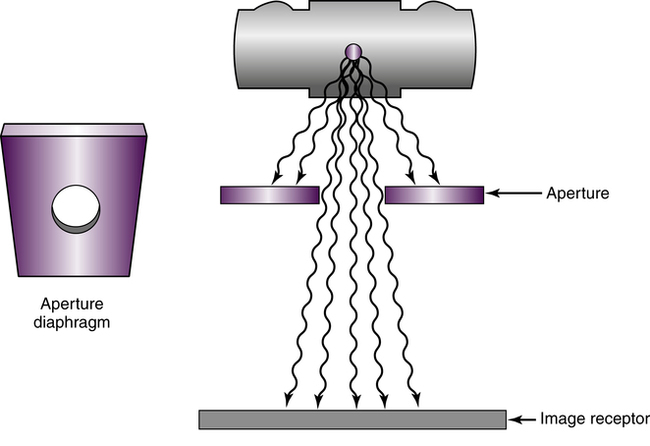
Although the size and shape of the aperture can be changed, the aperture cannot be adjusted from the designed size, and therefore the projected field size is not adjustable. In addition, because of the aperture’s proximity to the radiation source (focal spot), a large area of unsharpness surrounds the radiographic image (Figure 5-4). Although aperture diaphragms are still used in some applications, their use is not as widespread as other types of beam-restricting devices.
Cones and Cylinders
Cones and cylinders are shaped differently (Figure 5-5), but they have many of the same attributes. A cone or cylinder is essentially an aperture diaphragm that has an extended flange attached to it. The flange can vary in length and can be shaped as either a cone or a cylinder. The flange can also be made to telescope, increasing its total length (Figure 5-6). Similar to aperture diaphragms, cones and cylinders are easy to use. They slide onto the tube, directly below the window. Cones and cylinders limit unsharpness surrounding the radiographic image more than aperture diaphragms do, with cylinders accomplishing this task slightly better than cones (Figure 5-7). However, they are limited in terms of available sizes, and they are not interchangeable among tube housings. Cones have a particular disadvantage compared with cylinders. If the angle of the flange of the cone is greater than the angle of divergence of the primary beam, the base plate or aperture diaphragm of the cone is the only metal actually restricting the primary beam. Therefore, cylinders generally are more useful than cones. Cones and cylinders are almost always made to produce a circular projected field, and they can be used to advantage for particular radiographic procedures (Figure 5-8).
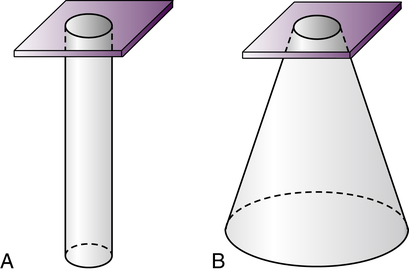
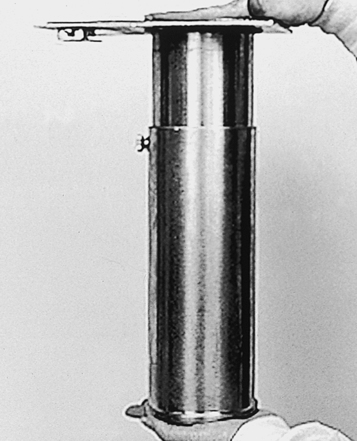
Collimators
A collimator has two or three sets of lead shutters (Figure 5-9). Located immediately below the tube window, the entrance shutters limit the x-ray beam much as the aperture diaphragm would. One or more sets of adjustable lead shutters are located 3 to 7 inches (8 to 18 cm) below the tube. These shutters consist of longitudinal and lateral leaves or blades, each with its own control. This design makes the collimator adjustable in terms of its ability to produce projected fields of varying sizes. The field shape produced by a collimator is always rectangular or square, unless an aperture diaphragm, cone, or cylinder is slid in below the collimator. Collimators are equipped with a white light source and a mirror to project a light field onto the patient. This light is intended to indicate accurately where the primary x-ray beam will be projected during exposure. In case of failure of this light, an x-ray field measurement guide (Figure 5-10) is present on the front of the collimator. This guide indicates the projected field size based on the adjusted size of the collimator opening at particular source-to-image receptor distances (SIDs). This guide helps ensure that the radiographer does not open the collimator to produce a field that is larger than the IR. Another problem that may occur is the lack of accuracy of the light field. The mirror that reflects the light down toward the patient or the light bulb itself could be slightly out of position, projecting a light field that inaccurately indicates where the primary beam will be projected. There is a means of testing the accuracy of this light field and the location of the center of projected beam (Box 5-1).
